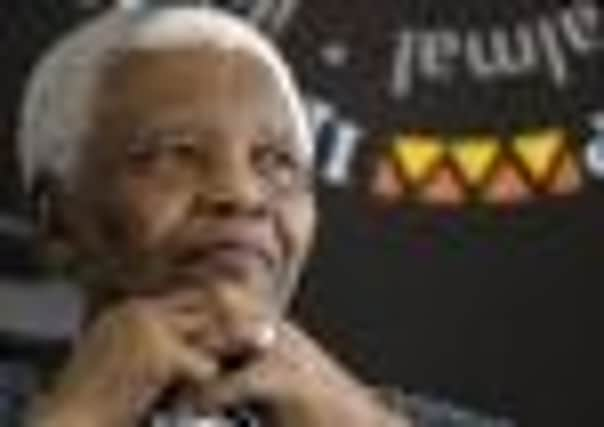Nelson Mandela undergoes gallstone surgery


Mandela, 94, who is credited with negotiating the peaceful transition from apartheid, has been in hospital for more than a week, recovering from a lung infection.
Doctors delayed endoscopic surgery to remove the gallstones until his lung ailment had cleared, presidential spokesman Mac Maharaj said.
Advertisement
Hide AdAdvertisement
Hide Ad“The procedure was successful and Madiba is recovering,” Maharaj said, using Mandela’s clan name, as many people do in South Africa.
Mandela received sedatives and a local anaesthetic to allow a surgeon to put an endoscope down his throat. Gallstones are small, crystalline deposits which form in the gallbladder and can cause excruciating pain.
Patients who undergo the same procedure as Mandela occasionally require follow-up surgery to remove the gallbladder.
However, Maharaj’s statement offered no other details about what additional care Mandela may require, nor did it suggest when he could be released from the hospital.
Mandela, South Africa’s first democratically elected president, was admitted last week to a hospital in South Africa’s capital, Pretoria, the government has said.
At first, officials said Mandela was undergoing tests and they later acknowledged he had been diagnosed with a lung infection.
The Nobel Peace prize winner has a history of lung problems, after falling ill with tuberculosis in 1988 toward the end of his 27 years in prison.
While doctors said at the time the disease caused no permanent damage to his lungs, medical experts say tuberculosis can cause problems years later for those infected.
Advertisement
Hide AdAdvertisement
Hide AdSouth Africa reveres Mandela for his magnanimity and being able to bridge racial gaps after centuries of white racist rule.
This hospital stay, his longest since undergoing radiation therapy in 2001 for prostate cancer, has sparked increasing concern about a man who represents the aspirations of a country still struggling with the issues of racial inequality and poverty.
Following the chaos that surrounded Mandela’s stay at a public hospital in 2011, the South African military took charge of his care and the government took over control of the information about his health.
However, public worries over Mandela have grown as government officials contradicted themselves in recent days about Mandela’s location, raising questions about who was actually treating him.
Yesterday, the South African National Editors’ Forum issued a statement criticising the Pretoria government for not being straightforward with journalists about Mandela’s condition.
The forum said that journalists had been working with the government to set up guidelines on how to handle covering Mandela in his waning years, though state officials ultimately declined to sign off on the agreement.
“Senior government representatives have sought to justify misleading statements about the circumstances surrounding Mandela’s whereabouts on the basis of irresponsible conduct by print and broadcast news organisations,” the statement read. “Nothing could be further from the truth.”
The editor’s forum includes members from newspapers, television broadcasters and radio stations in South Africa, as well as the Foreign Correspondents Association of Southern Africa.
Advertisement
Hide AdAdvertisement
Hide AdMandela largely retired from public life after one five-year term. He last made a public appearance when his country hosted the 2010 World Cup. Mandela has also grown more frail in recent years, with his grip on politics ever slackening.